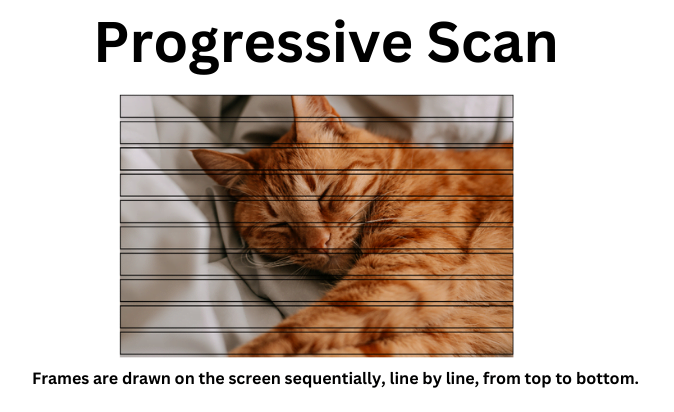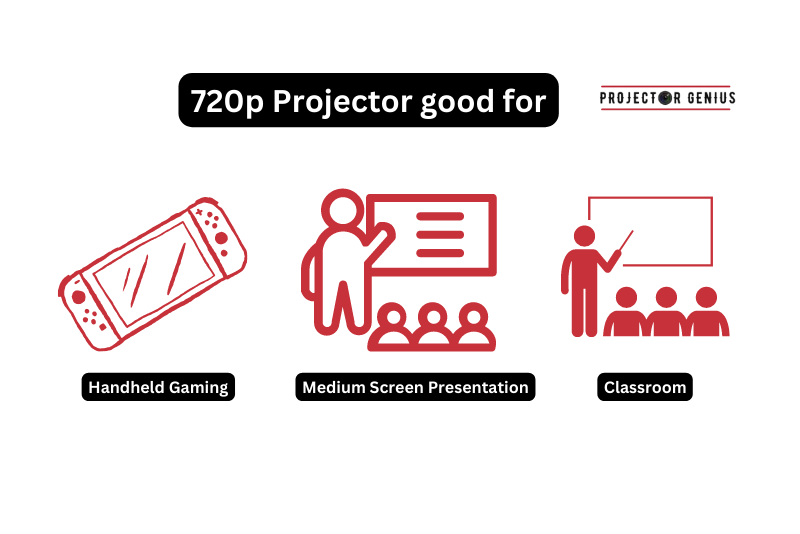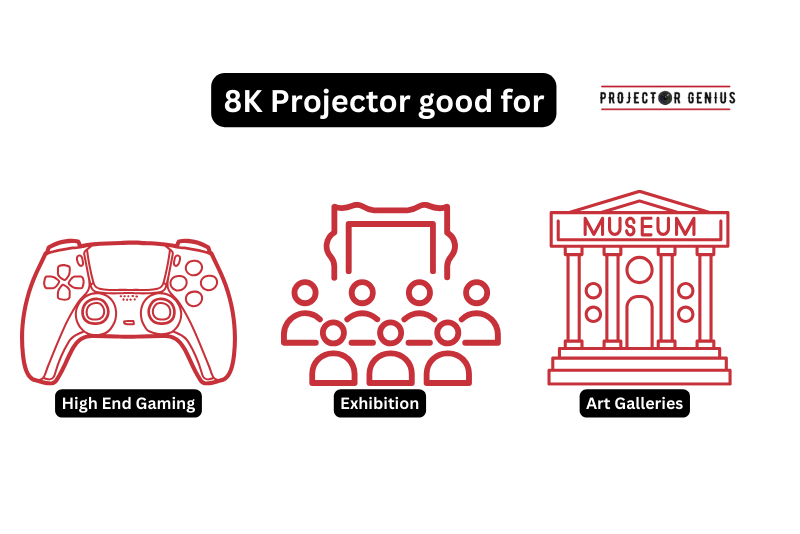720p vs 8K: Which is Better?
-
 Written by:
Kristy Roger
Written by:
Kristy Roger
- Last Updated:
So, you’re wondering which is the best 720p vs 8K.
Throughout this article, I’ll talk you through the detailed knowledge of 720p and 8K. I’ll also help you decide which Resolution works best for you.
720p vs 8K? 8K is better than 720p in terms of resolution and image quality. It offers four times the pixel density, resulting in sharper and more detailed visuals. However, the choice depends on factors like screen size and viewing distance, as 8K may not be noticeable on smaller screens or from a distance.
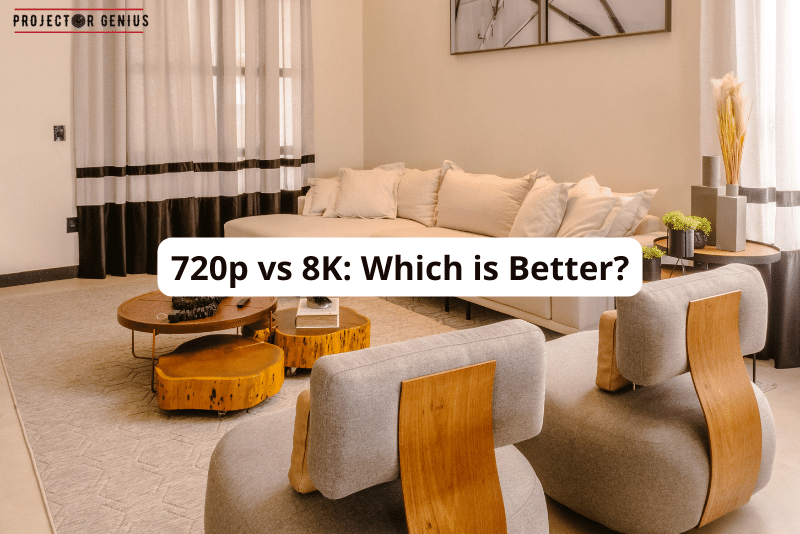
I recommend using the Table of Contents to quickly access the information you need.
My article is designed to cater to home cinema users of all levels, from Beginners to Advanced enthusiasts.
Table of Contents
What is 720p?
720p is a high-definition video display resolution format. The “720” refers to the number of vertical lines, and the “p” stands for progressive scan.
In 720p, each frame of the video is drawn on the screen in a single pass. This means that every frame contains the complete picture, resulting in a smooth and detailed image. It’s a significant improvement in image quality compared to standard-definition formats like 480p or 576p.
Specifically, 720p has a resolution of 1280 pixels in width and 720 pixels in height, providing a total pixel count of 921,600. This format is commonly used in high-definition television (HDTV) broadcasts, streaming services, Blu-ray discs, and various digital platforms.
Overall, 720p delivers a high level of visual detail and is suitable for a wide range of applications including television broadcasting, streaming video, gaming, and various forms of multimedia content.
What is 8K?
8K is an ultra-high-definition video display resolution format known for its incredibly high pixel count. The term “8K” refers to the horizontal pixel count, which is approximately 8,000 pixels.
In the standard 8K resolution, the display has approximately 7680 pixels in width and 4320 pixels in height. This results in a total of over 33 million pixels, providing an extraordinarily detailed and sharp image.
8K represents a significant leap forward in display technology and is considered the next frontier in high-resolution video. It offers an even greater level of detail and clarity compared to 4K, making it particularly well-suited for very large screens or for applications that require extremely high-quality visuals, such as digital cinema, high-end professional video production, and advanced medical imaging.
720p vs 8K: Differences Between 720p and 8K
720p and 8K are two different resolutions commonly used in the context of video displays. Here are the key differences between them:
Resolution
720p (HD): This resolution stands for 1280×720 pixels. It’s considered high definition and is commonly used in televisions, computer monitors, and video streaming platforms.
8K: This resolution stands for 7680×4320 pixels. It’s also known as Ultra High Definition (UHD) and is currently one of the highest commercially available resolutions.
Pixel Count
720p: It has a total pixel count of 921,600 pixels.
8K: It has a total pixel count of 33,177,600 pixels. This is about 36 times more pixels compared to 720p.
Image Quality
720p: Offers good image quality suitable for most general purposes, such as watching television shows, movies, and playing video games.
8K: Provides incredibly sharp and detailed images. It’s particularly beneficial for large screens or when viewing content up close.
Screen Size
720p: Ideally suited for smaller screens, such as computer monitors, laptops, and small to medium-sized televisions.
8K: It’s most effective on very large screens (75 inches or larger), or in situations where the viewer is very close to the screen.
Bandwidth and Storage
720p: Requires significantly less bandwidth for streaming and less storage space for files compared to 8K.
8K: Demands substantially higher bandwidth for streaming and more storage space for files due to the larger file size.
Hardware Requirements
720p: Can be comfortably handled by most modern devices, including smartphones, tablets, and older computers.
8K: Requires powerful hardware to play, edit, and render videos. This includes high-end graphics cards, processors, and substantial RAM.
Content Availability
720p: The majority of content available on platforms like television broadcasts, DVDs, and older online videos are in 720p.
8K: Content in 8K is much rarer due to the demanding hardware requirements for both creation and consumption. It’s mostly used in professional video production and select high-end displays.
Cost
720p: Devices and displays that support 720p are generally more affordable and widely available.
8K: 8K displays and cameras are considerably more expensive due to the advanced technology and manufacturing processes involved.
Future-Proofing
720p: It’s considered somewhat outdated as higher resolutions have become more common.
8K: Represents the cutting edge of display technology and is considered future-proof to a certain extent.
In summary, 720p is a standard high-definition resolution suitable for most everyday uses, while 8K offers an incredibly high level of detail, making it ideal for large screens and professional applications, but it requires significantly more powerful hardware and comes at a higher cost.
Factors to Consider When Choosing Between 720p and 8K
When choosing between 720p and 8K, there are several factors to consider. Your decision should be based on your specific needs, preferences, and the capabilities of your display devices and hardware. Here are the key factors to take into account:
Intended Use
720p: Suitable for most general purposes like watching TV shows, movies, casual gaming, and basic computing tasks.
8K: Ideal for professional video editing, high-end gaming, and situations where extremely high resolution and detail are required.
Display Size
720p: Best suited for smaller screens (e.g., computer monitors, laptops, and small to medium-sized TVs).
8K: Most effective on very large screens (75 inches or larger) or in environments where viewers are very close to the screen.
Budget
720p: More budget-friendly in terms of device and display costs.
8K: Significantly more expensive due to the advanced technology and manufacturing processes involved.
Available Content
720p: The majority of content (e.g., television broadcasts, DVDs, older online videos) is available in 720p.
8K: Content in 8K is rarer and typically used in professional video production or select high-end displays.
Hardware Requirements
720p: Can be handled by most modern devices, including smartphones, tablets, and older computers.
8K: Requires powerful hardware (high-end graphics cards, processors, substantial RAM) to play, edit, and render videos.
Viewing Distance
720p: Works well at moderate viewing distances. No need to sit very close to the screen.
8K: Benefits from closer viewing distances to fully appreciate the increased detail.
Content Creation
720p: Suitable for casual content creation, vlogging, and amateur video production.
8K: Ideal for professional video production, especially for high-quality films, commercials, and visual effects.
Bandwidth and Storage
720p: Requires less bandwidth for streaming and less storage space for files compared to 8K.
8K: Demands higher bandwidth for streaming and more storage space for files due to the larger file size.
Future-Proofing
720p: Considered somewhat outdated as higher resolutions have become more common.
8K: Represents the cutting edge of display technology and is considered future-proof to a certain extent.
Ultimately, the choice between 720p and 8K should be based on a combination of these factors, prioritizing those that are most important to you and aligning with your specific use case. Keep in mind that the availability of 8K content and compatible hardware may also influence your decision.
FAQ (Frequently Asked Questions)
Is 8K Resolution Significantly Superior to 720p for all Content?
Yes, 8K resolution is undeniably superior to 720p for all content. When I switched to an 8K display, the difference was astonishing. Everything, from movies to games, gained an incredible level of detail. It’s as if I’m peering through a crystal-clear window, capturing every nuance and fine texture. Even on larger screens, where 720p might start to show its limitations, 8K continues to shine brilliantly. My gaming experiences are now immersive, with characters and environments coming to life in a way that 720p simply couldn’t replicate. Every frame feels like a work of art, making me appreciate the artistry behind the visuals in a whole new light.
However, it’s important to note that while 8K is a giant leap forward in visual fidelity, not all content is readily available in this format. Some older movies and shows may not be remastered to 8K, which means they won’t showcase the full potential of my display.
Despite this, I’ve found that even upscaling 720p content on an 8K screen results in a sharper, more vibrant image compared to viewing it on a native 720p display. Overall, the upgrade to 8K has undoubtedly transformed my viewing experience, making it an investment that I wholeheartedly believe is worth every pixel.
Do all Devices Support 8K Resolution?
No, not all devices support 8K resolution. When I first got my 8K TV, I was thrilled about the potential for ultra-high-definition visuals. However, I soon realized that not all of my devices were capable of harnessing this incredible level of detail. Some of my older gaming consoles and streaming devices simply couldn’t handle the demands of 8K content. It became evident that to truly make the most of my 8K TV, I needed to invest in more advanced hardware that could keep up with the stunning visuals.
Even some modern laptops and computers may struggle with 8K playback, especially those without dedicated graphics cards or powerful processors. I found that I had to carefully select devices that explicitly mentioned 8K support in their specifications. It’s crucial to research and ensure compatibility before expecting every device to seamlessly deliver the breathtaking clarity that 8K offers. While the technology is undoubtedly impressive, it’s important to acknowledge that not all devices are equipped to fully embrace this cutting-edge resolution.
Is 720p still Relevant Given the Prevalence of 8K Displays?
Yes, in my experience, 720p still holds relevance despite the surge in popularity of 8K displays. While 8K undeniably offers an unparalleled level of detail, 720p remains a practical choice for various everyday uses. For instance, when watching content on smaller screens like laptops or tablets, the difference in visual quality between 720p and 8K may not be as discernible.
Moreover, many streaming platforms still primarily offer content in 720p, making it a widely supported resolution for online viewing. This means that for casual watching or on devices with limited processing power, 720p continues to provide a satisfactory viewing experience.
Furthermore, considering the cost factor, 720p devices are notably more budget-friendly compared to their 8K counterparts. This makes them an accessible option for individuals who may not be willing or able to invest in the higher price tag associated with 8K displays. Additionally, for those with older hardware or devices that aren’t 8K compatible, 720p remains a practical choice to ensure smooth playback and an enjoyable viewing experience. In this way, 720p still maintains its relevance in a world increasingly dominated by 8K displays.
How does Streaming Quality Differ Between 720p and 8K?
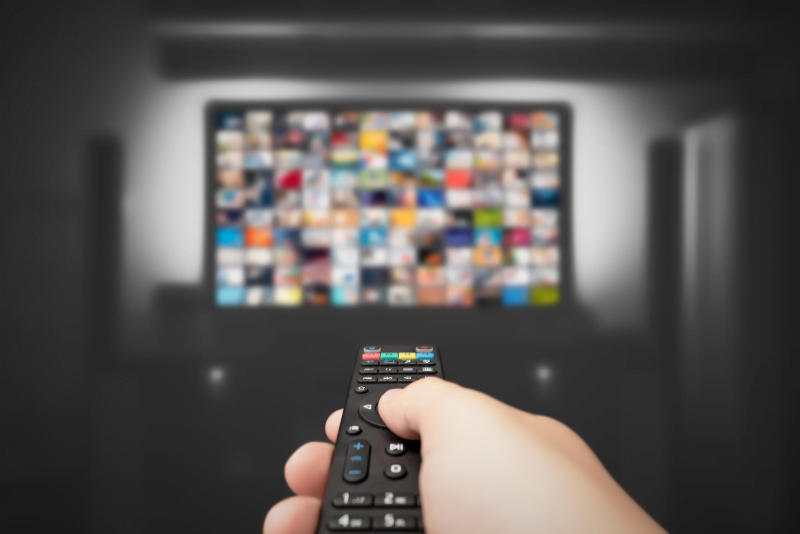
When it comes to streaming quality, the disparity between 720p and 8K is quite substantial. I noticed that streaming content in 720p typically requires significantly less bandwidth compared to streaming in 8K. This means that even with a modest internet connection, I can enjoy smooth playback and clear visuals with 720p.
On the other hand, with 8K, a robust and high-speed internet connection is essential to prevent buffering or lagging issues. The sheer volume of data required for 8K streaming is considerably higher, demanding more robust network capabilities.
Additionally, the storage space required for downloaded content differs significantly between 720p and 8K. I found that 720p files are notably smaller compared to their 8K counterparts. This is a crucial consideration, especially for those with limited storage on their devices. With 8K content, I noticed that the files are considerably larger, necessitating ample space to store movies, shows, or videos. This disparity in file sizes means that users need to plan accordingly, ensuring they have sufficient storage available for their preferred resolution.
Can the Human eye Discern the Difference Between 720p and 8K on Typical Screens?
In my experience, the human eye can indeed discern a noticeable difference between 720p and 8K, especially on typical screens. When viewing content on a larger display, the increased resolution of 8K becomes strikingly apparent. Details that might appear slightly blurred or pixelated in 720p are remarkably crisp and clear in 8K. This becomes particularly evident when watching high-quality visuals like nature documentaries or films with intricate scenery. It’s like witnessing a leap from a good photograph to an impeccably detailed painting.
Moreover, even on more standard-sized screens, the upgrade to 8K enhances the overall viewing experience. Fine textures, subtle gradients, and intricate patterns are vividly reproduced, lending an extraordinary depth to the visuals.
While 720p may suffice for casual viewing, especially on smaller devices, the leap to 8K elevates the immersive quality of the content, making it akin to looking through a remarkably clear window into another world.
Final Thoughts
The choice between 720p and 8K hinges on a combination of specific needs, preferences, and the capabilities of one’s display devices and hardware. While 8K undeniably offers an unprecedented level of detail and clarity, 720p maintains its relevance for various everyday uses, especially on smaller screens or devices with limited processing power. Additionally, considerations like budget constraints, content availability, and storage requirements play a pivotal role in determining the most suitable resolution.
It’s important to acknowledge that the prevalence of 8K displays does not diminish the value of 720p. Each resolution serves a purpose, and their applicability depends on the context in which they are used. Ultimately, the choice between the two should align with individual preferences and priorities, ensuring an optimal viewing experience tailored to one’s specific requirements. Whether it’s the affordability and practicality of 720p or the unrivaled visual splendor of 8K, both resolutions have their distinct merits in today’s diverse technological landscape.
Author of this Post:

Kristy Roger
Home Cinema Consultant & Tech Enthusiast
Holding a background in Industrial and Electrical Technology from the University of Alberta, Kristy has spent 5+ years consulting on home theater products at a top electronics firm. As a certified Technical Professional with Lean Six Sigma credentials, Kristy expertise ranges from projector nuances to hands-on experience with leading models. Kristy have been sharing her knowledge online for two years, blending professional insights with personal experiences from her own home cinema setup. Off the screen, She is a dedicated mom to Jerry, Ryan, and our two pups, Cuddle and Paw.

